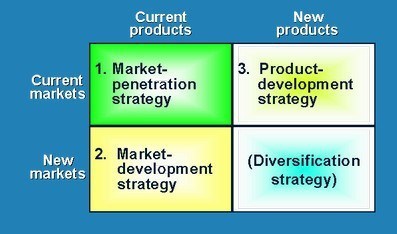
Marketing Mix or 4 p's of marketing - Product marketing-mix
Marketing Mix – The 4 p’s of marketing
Dictionary Definition: The marketing mix refers to the set of actions, or tactics, that a company uses to promote its brand or product in the market. The 4Ps make up a typical marketing mix – Price, Product, Promotion and Place.
The Marketing mix is a set of four decisions which needs to be taken before launching any new product. These variables are also known as the 4 P’s of marketing. These four variables help the firm in making strategic decisions necessary for the smooth running of any product / organization.
Table of Contents
If you ask What is the marketing mix?
Then in summary these 4 variables comprise the Marketing-mix.
- Product – What the company is manufacturing?
- Price – What is the pricing strategy used by the company?
- Place – Where is the company selling?
- Promotions – How is the company promoting the product?
What are the two types of Marketing mix?
1) Product marketing-mix – Comprised of Product, price, place and promotions. This marketing-mix is mainly used in case of Tangible goods.
2) Service marketing-mix – The service marketing-mix has three further variables included which are people, physical evidence and process. They are discussed in detail in the article on service marketing-mix.
The term marketing-mix was first coined by Neil H Borden back in 1964 in his article “The concept of marketing-mix”. Several strategic analysts over the years believe that the marketing-mix can make or break the firm. Having the right marketing-mix at the start of the marketing plan is absolutely essential. Over time the concept of marketing-mix has provided a steady platform for the launch of a new product or business.
As mentioned before, the marketing-mix is characterized by four different but equally important variables. These variables are never constant and may be changed over time. However, a change in one of the variables may cause a change in all the other variables as well.
The Variables of Marketing-mix are as follows
1) Product in the Market mix
The first thing you need, if you want to start a business, is a product. Therefore Product is also the first variable in the marketing-mix. Product decisions are the first decisions you need to take before making any marketing plan. A product can be divided into three parts. The core product, the augmented product and the tertiary product. Before deciding on the product component there are some questions which you need to ask yourself.
- What product are you selling?
- What would be the quality of your product?
- Which features are different from the market?
- What is the USP of the product?
- Whether the product will be branded as sub brand or completely new?
- What are the secondary products which can be sold along with primary (Warranty, services)
Based on these questions, several product decisions have to be made. These product decisions will in turn affect the other variables of the mix. For example – You plan on launching a car which will have the highest quality. Thus the pricing, promotions and placing would have to be altered accordingly. Thus as long as you dont know your product, you cannot decide any other variable of the marketing-mix. However, if the product features are not fitting in the mix, you can alter the product such that it finds a place for itself in the marketing-mix.
2) Pricing in the Marketing mix
Pricing of a product depends on a lot of different variables and hence it is constantly updated. Major consideration in pricing is the costing of the product, the advertising and marketing expenses, any price fluctuations in the market, distribution costs etc. Many of these factors can change separately. Thus the pricing has to be such that it can bear the brunt of changes for a certain period of time. However, if all these variables change, then the pricing of a product has to be increased and decreased accordingly.
Along with the above factors, there are also other things which have to be taken in consideration when deciding on a pricing strategy. Competition can be the best example. Similarly, pricing also affects the targeting and positioning of a product. Pricing is used for sales promotions in the form of trade discounts. Thus based on these factors there are several pricing strategies, one of which is implemented for the marketing-mix.
3) Place in the Marketing-mix
Place refers to the distribution channel of a product. If a product is a consumer product, it needs to be available as far and wide as possible. On the other hand, if the product is a Premium consumer product, it will be available only in select stores. Similarly, if the product is a business product, you need a team which interacts with businesses and makes the product available to them. Thus the place where the product is distributed, depends on the product and pricing decisions, as well as any STP decisions taken by a firm.
Distribution has a huge affect on the profitability of a product. Consider a FMCG company which has national distribution for its product. An increase in petrol rates by 10 rs will in fact bring about drastic changes in the profitability of the company. Thus supply chain and logistics decisions are considered as very important costing decisions of the firm. The firm needs to have a full proof logistics and supply chain plan for its distribution.
4) Promotions in the Marketing-mix
Promotions in the marketing-mix includes the complete integrated marketing communications which in turn includes ATL and BTL advertising as well as sales promotions. Promotions are dependent a lot on the product and pricing decision. What is the budget for marketing and advertising? What stage is the product in? If the product is completely new in the market, it needs brand / product awareness promotions, whereas if the product is already existing then it will need brand recall promotions.
Promotions also decide the segmentation targeting and positioning of the product. The right kind of promotions affect all the other three variables – the product, price and place. If the promotions are effective, you might have to increase distribution points, you might get to increase the price because of the rising brand equity of the product, and the profitability might support you in launching even more products. However, the budget required for extensive promotions is also high. Promotions is considered as marketing expenses and the same needs to be taken in consideration while deciding the costing of the product.
Thus as we see from the above diagram, all the four variables of marketing-mix are inter related and affect each other. By increasing the pricing of the product, demand of the product might lessen, and lesser distribution points might be needed.
On the other hand, the product USP can be such that maximum concentration is on creating brand awareness, thereby increasing need of better pricing and more promotions. Finally, the overall marketing-mix can result in your customer base asking for some improvement in the product, and the same can be launched as the upgraded product.
The role of Marketing-mix in Strategy
Marketing-mix plays a crucial role while deciding the strategy of an organization. It is the first step even when a marketing plan or a business plan is being made. This is because, your marketing-mix decision will also affect segmentation, targeting and positioning decisions. Based on products, segmentation and targeting will be done. Based on the price, positioning can be decided. And these decisions will likely affect the place and promotion decisions. Thus, the marketing-mix strategy goes hand in hand with segmentation targeting and positioning.
The above four P’s of marketing give you an overall look at the product marketing-mix. If your product is a service offering then there are 3 further P’s taken into consideration namely – people, physical evidence and process. For the same, you can refer the Service marketing-mix.










